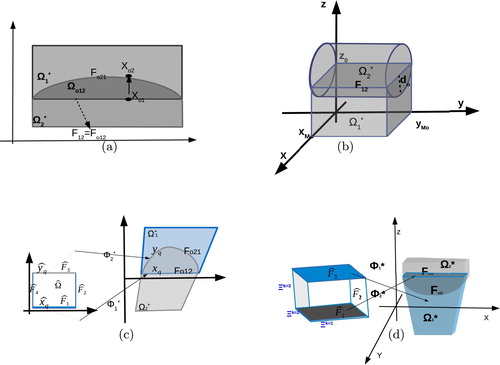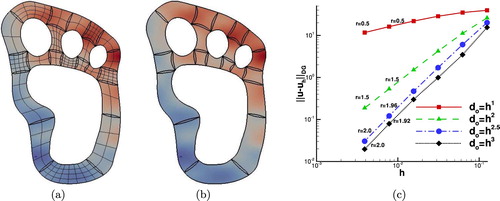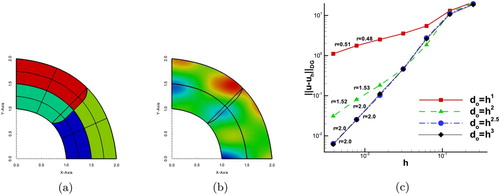Figures & data
Figure 1. (a) A conforming multipatch representation of Ω, (b) the inaccurate control points and the non-conforming multipatch representation of Ω.

Figure 2. (a) Illustration of a patch representation with the overlapping region in 2d and the diametrically opposite points on
, (b) overlapping patches in 3d, (c) the images of the faces of
under the mappings
in 2d, (d) the images of the faces of
in 3d.

Figure 3. (a) Configuration of the faces and the edges on and their corresponding edges on
which are used to compute the interface integrals, (b) an example of an overlapping region with more than two faces. The relative edges on the opposite faces must again match.

Table 1. The values of the expected rates r as they result from estimate (Equation63 (63)
(63)  (63) ).
(63) ).
Figure 4. Example 4.1: (a) The patches with the initial non-matching meshes and the contours of the exact solution. (b) The contours of the
solution for
. (c) The convergence rates for the different values of λ.

Figure 5. Example 4.2: (a) The overlapping patches and the pattern of diffusion coefficients
, (b) The contours of
on every
computed with
, (c) The convergence rates for the four choices of λ.



